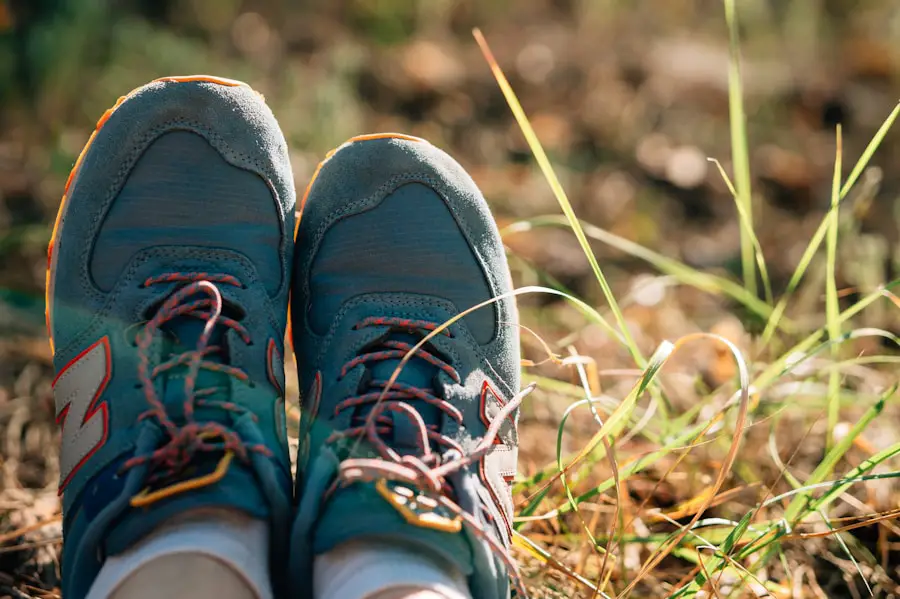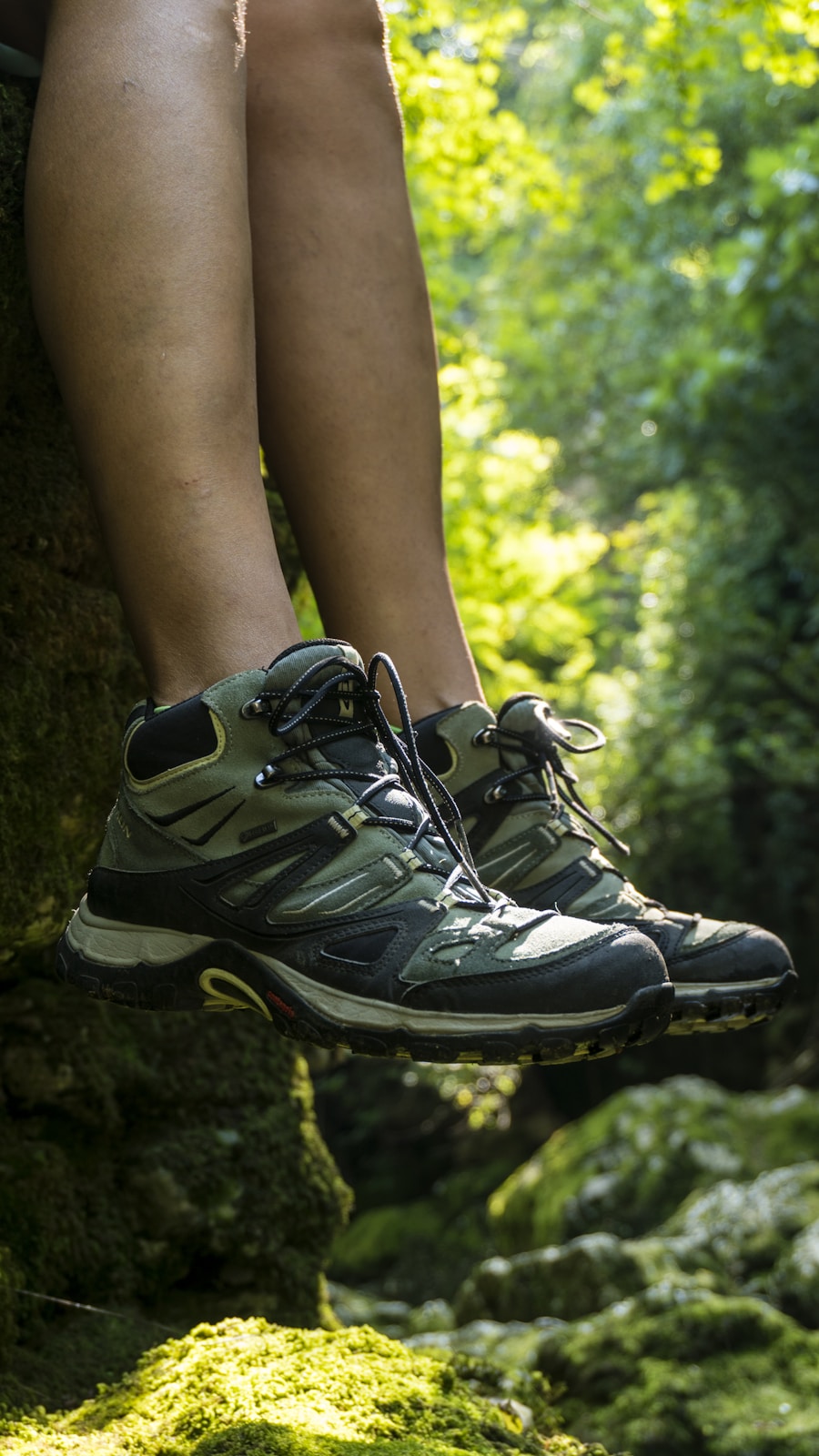Hiking is an activity that invites individuals to explore the great outdoors, traverse rugged terrains, and immerse themselves in nature’s beauty. However, the experience can be significantly influenced by the footwear chosen for the journey. Wide hiking shoes have emerged as a popular option for those who require additional space in their footwear.
These shoes are designed to accommodate wider feet, providing comfort and support during long treks. The importance of selecting the right hiking shoes cannot be overstated, as they play a crucial role in preventing discomfort, blisters, and injuries. Wide hiking shoes are not merely a variation of standard hiking footwear; they are specifically engineered to cater to individuals with broader foot dimensions.
This design consideration is essential for ensuring that hikers can enjoy their adventures without the constant distraction of pinching or constriction. The market for hiking shoes has evolved to recognize the diverse needs of outdoor enthusiasts, leading to a range of options that prioritize both functionality and comfort. As more people take to the trails, understanding the nuances of wide hiking shoes becomes increasingly important.
Key Takeaways
- Wide hiking shoes are designed to accommodate wider feet and provide extra space for comfort during outdoor activities.
- The benefits of wide hiking shoes include improved comfort, reduced risk of blisters and hot spots, and better stability and support on uneven terrain.
- Drawbacks of wide hiking shoes may include limited options in terms of style and design, as well as potential for reduced precision in fit for some users.
- When choosing wide hiking shoes, it’s important to consider factors such as the level of arch support, the type of terrain you’ll be hiking on, and the overall fit and comfort of the shoes.
- Individuals with wider feet or those who experience discomfort in regular hiking shoes should consider choosing wide hiking shoes for a more comfortable and enjoyable outdoor experience.
- Those with narrow or regular width feet may find wide hiking shoes to be too loose and may not provide the necessary support and stability during outdoor activities.
- When looking for the right wide hiking shoes, it’s important to try on different styles and brands, consider the level of cushioning and support, and seek professional advice if needed.
- In conclusion, the decision to choose wide hiking shoes should be based on individual comfort and fit, as well as the specific needs and preferences of the hiker.
Benefits of Wide Hiking Shoes
One of the primary advantages of wide hiking shoes is the enhanced comfort they provide. For individuals with wider feet, traditional hiking shoes can often feel restrictive, leading to discomfort during extended periods of wear. Wide hiking shoes alleviate this issue by offering a more spacious toe box and overall fit, allowing for natural foot movement.
This increased comfort can translate into improved performance on the trail, as hikers are less likely to experience fatigue or pain that can detract from their enjoyment of the hike. In addition to comfort, wide hiking shoes often come equipped with features that enhance stability and support. Many models incorporate advanced cushioning systems and arch support tailored for wider feet, which can help distribute weight more evenly and reduce the risk of injury.
This is particularly beneficial when navigating uneven terrain or carrying a heavy backpack, as proper support can prevent strain on the feet and lower limbs. Furthermore, wide hiking shoes are typically constructed with durable materials that withstand the rigors of outdoor activities, ensuring longevity and reliability.
Drawbacks of Wide Hiking Shoes

Despite their many benefits, wide hiking shoes are not without their drawbacks. One significant concern is that they may not provide the same level of precision fit as narrower models. For some hikers, especially those who prefer a snug fit for technical trails or challenging climbs, wide shoes can feel cumbersome or less responsive.
This lack of precision can lead to decreased performance in certain situations, particularly when quick foot movements or agility are required. Another potential drawback is the limited selection available in wide sizes. While the market for wide hiking shoes has grown, it still lags behind standard sizes in terms of variety and options.
Hikers may find themselves facing fewer choices regarding style, color, and specific features when searching for wide models. This limitation can be frustrating for those who have specific preferences or requirements for their hiking footwear.
Considerations for Choosing Wide Hiking Shoes
| Consideration | Importance |
|---|---|
| Toe Box Width | Wide toe box provides comfort and prevents blisters |
| Arch Support | Proper arch support reduces foot fatigue and prevents injuries |
| Ankle Support | Crucial for stability and preventing ankle sprains |
| Traction | Good traction prevents slipping on uneven terrain |
| Waterproofing | Keeps feet dry and comfortable in wet conditions |
When selecting wide hiking shoes, several factors should be taken into account to ensure the best fit and performance. First and foremost, it is essential to measure one’s feet accurately. Many people underestimate the importance of proper sizing; therefore, measuring both length and width can help identify the right shoe size.
Additionally, trying on shoes at the end of the day when feet are slightly swollen can provide a more accurate representation of how they will feel during hikes. Another critical consideration is the type of terrain one plans to hike on. Different hiking environments may require specific features in footwear, such as enhanced traction for rocky trails or waterproofing for wet conditions.
Understanding these needs will help narrow down options and ensure that the chosen wide hiking shoes are suitable for the intended use. Furthermore, considering the weight of the shoes is vital; lighter models may be preferable for long-distance hikes where every ounce counts.
Who Should Choose Wide Hiking Shoes
Wide hiking shoes are particularly beneficial for individuals with wider foot shapes or those who have experienced discomfort in standard-width footwear. People with conditions such as bunions or flat feet may find that wide shoes alleviate pressure points and provide a more comfortable fit. Additionally, hikers who frequently engage in long-distance trekking or multi-day backpacking trips may benefit from the extra room and support that wide shoes offer, reducing fatigue over extended periods.
Athletes or outdoor enthusiasts who participate in various activities beyond hiking may also find wide hiking shoes advantageous. For instance, those who enjoy trail running or scrambling may appreciate the stability and comfort provided by a wider shoe design. Ultimately, anyone who has struggled with foot pain or discomfort while hiking should consider exploring wide options to enhance their outdoor experience.
Who Should Avoid Wide Hiking Shoes

Comfort and Support
Individuals with narrow feet may not get the necessary support from wide models, leading to instability while walking or climbing. A shoe that is too wide can cause excessive movement within the shoe itself, increasing the risk of blisters and other foot injuries due to friction.
Speed and Agility
Moreover, hikers who prioritize speed and agility on technical trails might prefer a more fitted shoe that allows for precise foot placement and control. In such cases, a narrower shoe may provide better responsiveness and performance on challenging terrain.
Assessing Your Needs
It is essential for each hiker to assess their unique foot shape and hiking style before committing to wide hiking shoes.
Tips for Finding the Right Wide Hiking Shoes
Finding the perfect pair of wide hiking shoes involves more than just selecting a wider size; it requires careful consideration of various factors to ensure optimal fit and performance. First, it is advisable to try on multiple brands and models since sizing can vary significantly between manufacturers. Each brand may have its own interpretation of what constitutes a “wide” shoe, so exploring different options can help identify which fits best.
Additionally, wearing appropriate socks during fittings is crucial. Thick or cushioned socks can alter how a shoe fits; therefore, using socks similar to those worn during hikes will provide a more accurate assessment of comfort and fit. It is also beneficial to walk around in the shoes for an extended period within the store to gauge how they feel over time.
Pay attention to any areas of pressure or discomfort that may arise during this trial period. Another tip is to consider purchasing from retailers with flexible return policies. This allows hikers to test their new shoes on actual trails before fully committing to them.
If discomfort arises after a few hikes, being able to return or exchange them can save time and money in the long run.
Making the Decision for Wide Hiking Shoes
Choosing the right hiking footwear is a critical decision that can significantly impact one’s outdoor experience. Wide hiking shoes offer distinct advantages for those with broader feet or specific foot conditions, providing comfort and support essential for long treks. However, it is equally important to recognize their limitations and assess individual needs before making a purchase.
Ultimately, understanding personal foot shape, preferred hiking styles, and specific terrain requirements will guide hikers toward making an informed decision about whether wide hiking shoes are right for them. By taking these factors into account and following practical tips for finding the right fit, outdoor enthusiasts can enhance their adventures while ensuring their feet remain comfortable and well-supported throughout their journeys in nature.
If you are considering getting wide hiking shoes, you may also be interested in reading about the best travel fishing pole on taketravelinfo.com. Having the right gear for outdoor activities is essential for a successful and enjoyable experience, so learning about the best options available can help you make informed decisions. Whether you are planning a hiking trip or a fishing excursion, having the right equipment can make all the difference.
FAQs
What are wide hiking shoes?
Wide hiking shoes are designed for individuals with wider feet or those who prefer a roomier fit. These shoes typically have a wider toe box and a more generous overall fit to accommodate a wider foot shape.
Who should consider getting wide hiking shoes?
Individuals with wider feet, bunions, or other foot conditions that require extra room in the toe box may benefit from wide hiking shoes. Additionally, those who prefer a roomier fit or plan to wear thicker hiking socks may also find wide hiking shoes more comfortable.
What are the benefits of wide hiking shoes?
Wide hiking shoes provide a more comfortable and accommodating fit for individuals with wider feet. They can help prevent discomfort, blisters, and foot pain that may occur from wearing shoes that are too narrow.
Are wide hiking shoes suitable for everyone?
Wide hiking shoes are not necessary for everyone. Those with narrow or regular width feet may find that standard hiking shoes provide a comfortable and secure fit. It’s important to choose hiking shoes based on individual foot shape and comfort preferences.
How do I know if I need wide hiking shoes?
If you experience discomfort, pinching, or rubbing in the toe box area of standard hiking shoes, or if you have wider feet that feel cramped in regular shoes, you may benefit from trying wide hiking shoes. It’s important to try on different styles and sizes to find the best fit for your feet.
